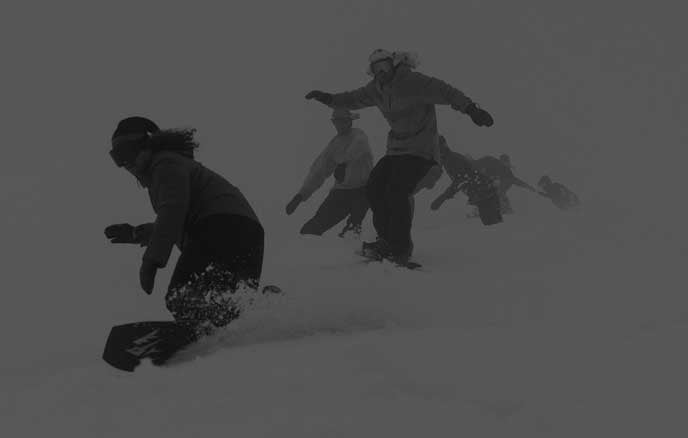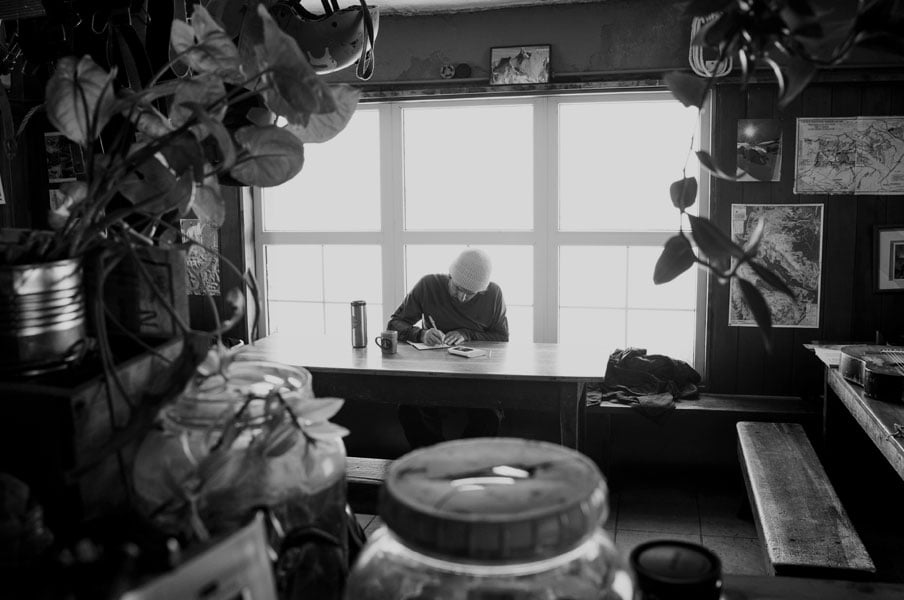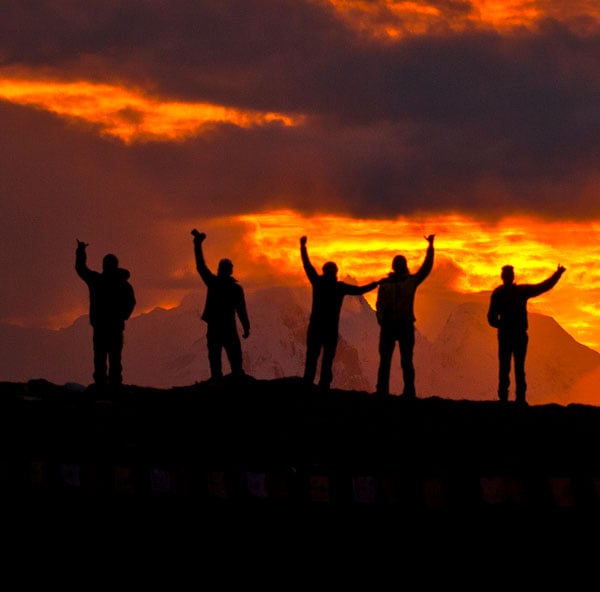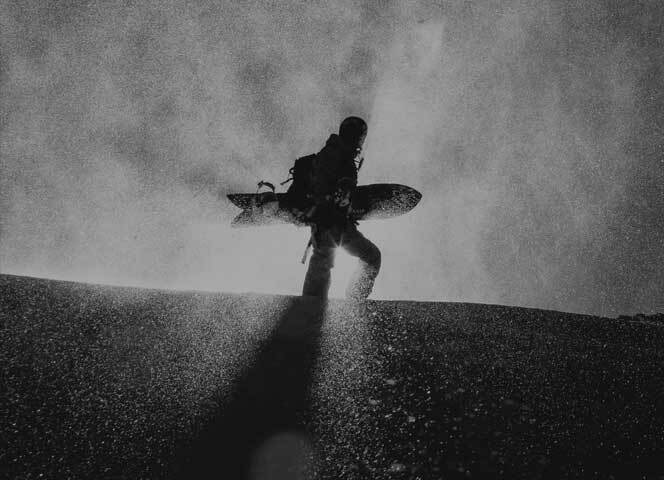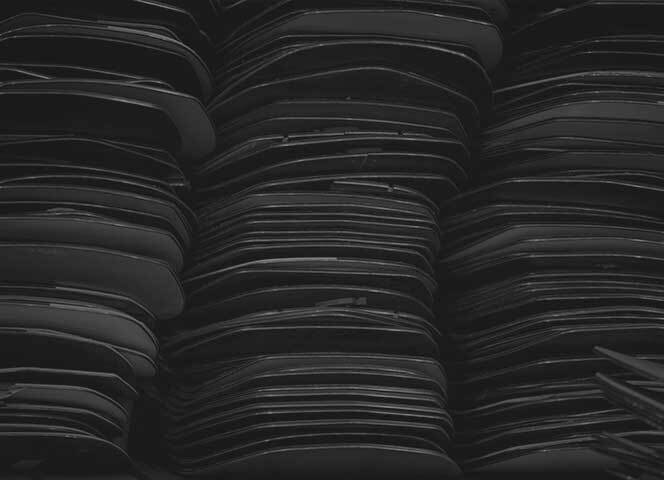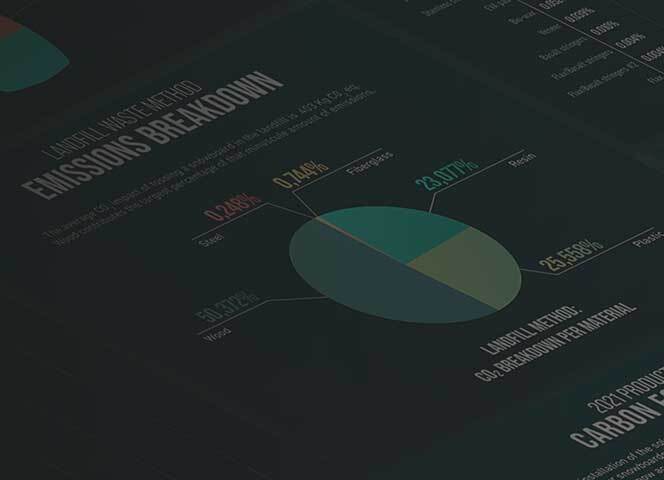Is your board ready to recycle?
Is your board ready to recycle?
The primary goal of the Re-Up Tech snowboard recycling program is to keep snowboards out of the landfill or the incinerator. We want to recycle dead boards that are damaged beyond repair and would otherwise need to be thrown away.
We do not want to recycle boards that are slightly damaged, but could easily be repaired. The environmental impact of recycling and making a new board will always be greater than keeping a snowboard on the slope.
Deciding when your board is really dead and ready for recycling can be the tricky part. It’s not uncommon for a snowboard to look pretty beat up, but if it got a good tune it would still offer solid performance.
What is Re-Up Tech?
What is Re-Up Tech?
Unique to the Hovercraft 2.0 snowboard. Recycling snowboards and upcycling materials into new, high performance snowboards.
To help you decide whether your old snowboard is ready to recycle we’ve created a reference guide that highlights what unrepairable board damage looks like. If your board has similar damage to these photos it’s likely a good candidate for recycling.
If you have questions about whether your board should be recycled, or the Re-Up Tech Recycling Program, you can reach out to us here and we’d be happy to answer any of your questions.
Recycle your dead board
Recycle your dead board
The more boards we get back, the more boards we can build using the technology. This is where riders like you come in.
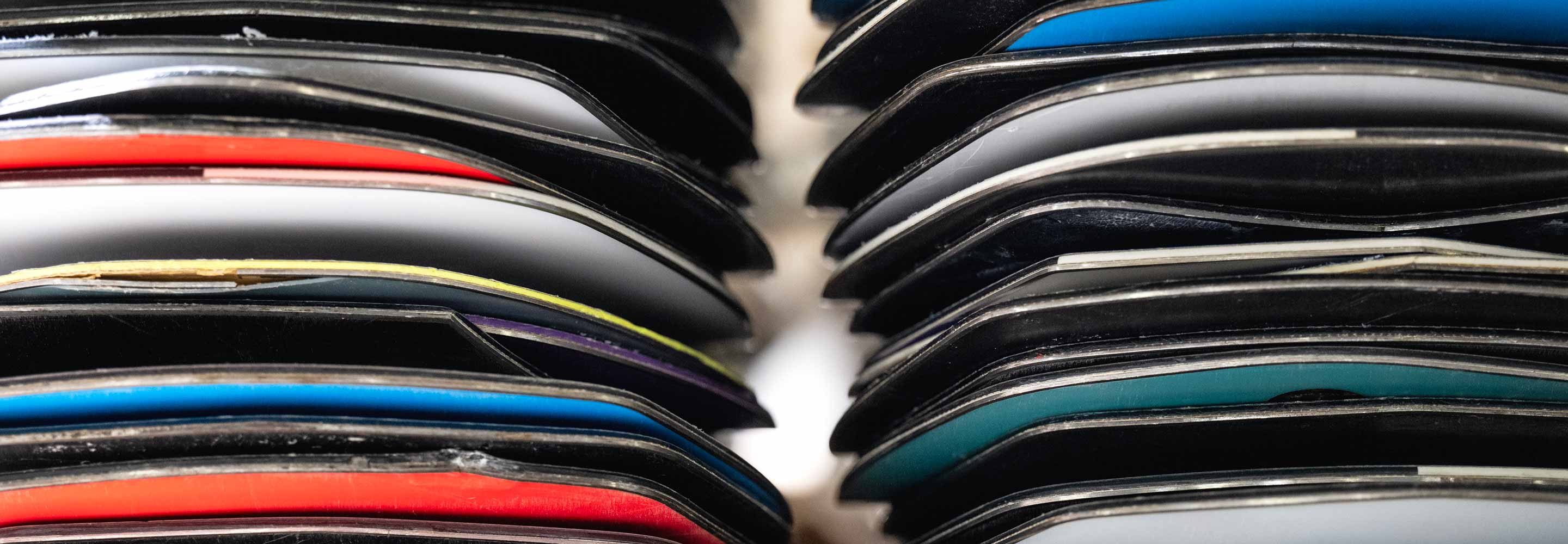
Cracked topsheet
Cracked snowboard topsheets can not be repaired. Depending on how big the crack is you may be able to keep riding the board for a little while, but the performance of the board will undoubtedly be diminished. Boards with cracked topsheets are perfect for recycling.
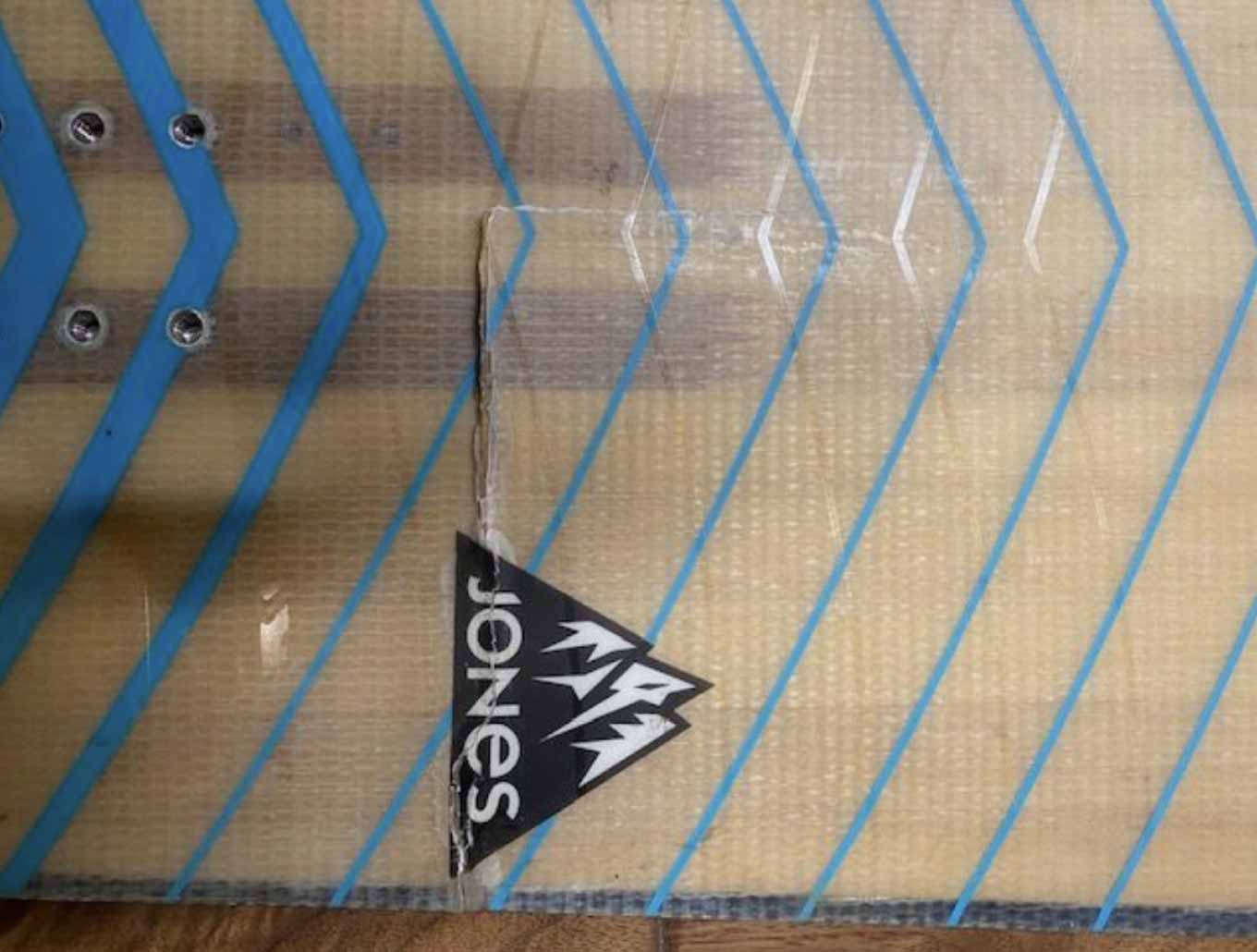
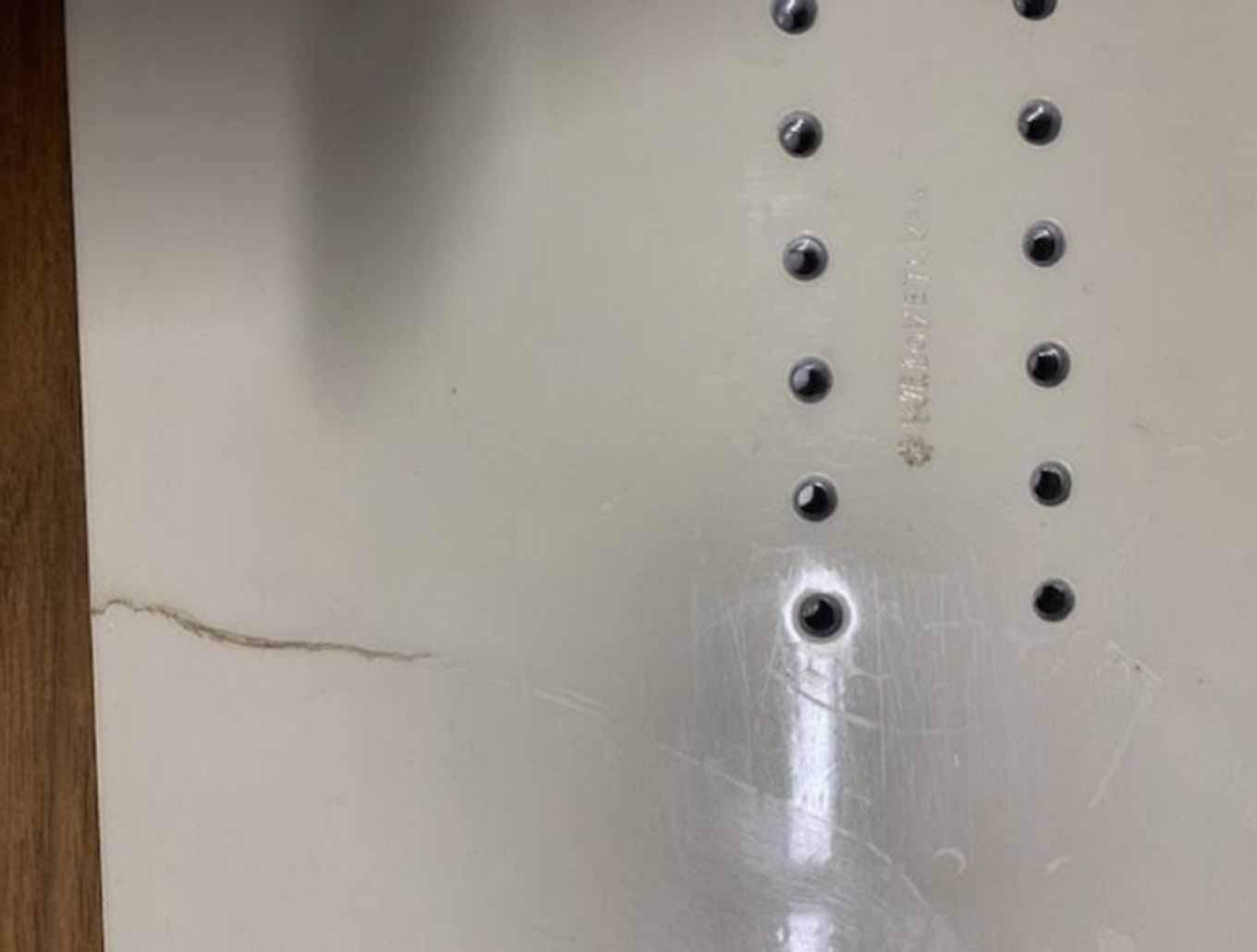
Sidewall delamination
It is not common, but sometimes if you hit a rock hard enough, the impact will break the bond between the edge and the sidewall and cause what is called a delamination. Small delaminations can sometimes be repaired with epoxy, but even if repaired they often split back open and get worse. Delaminations severely reduce board performance and qualify a board for recycling.
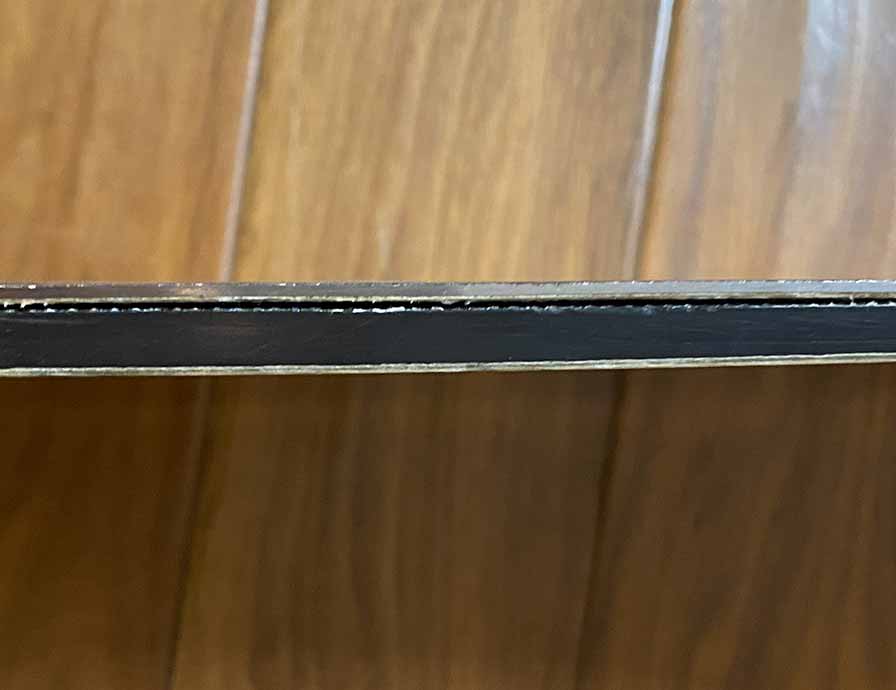
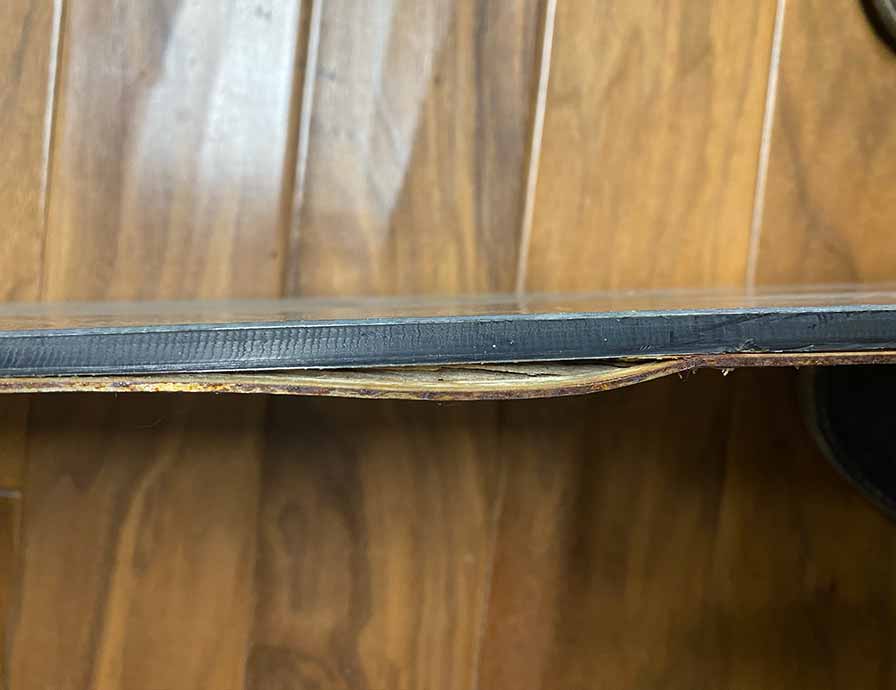
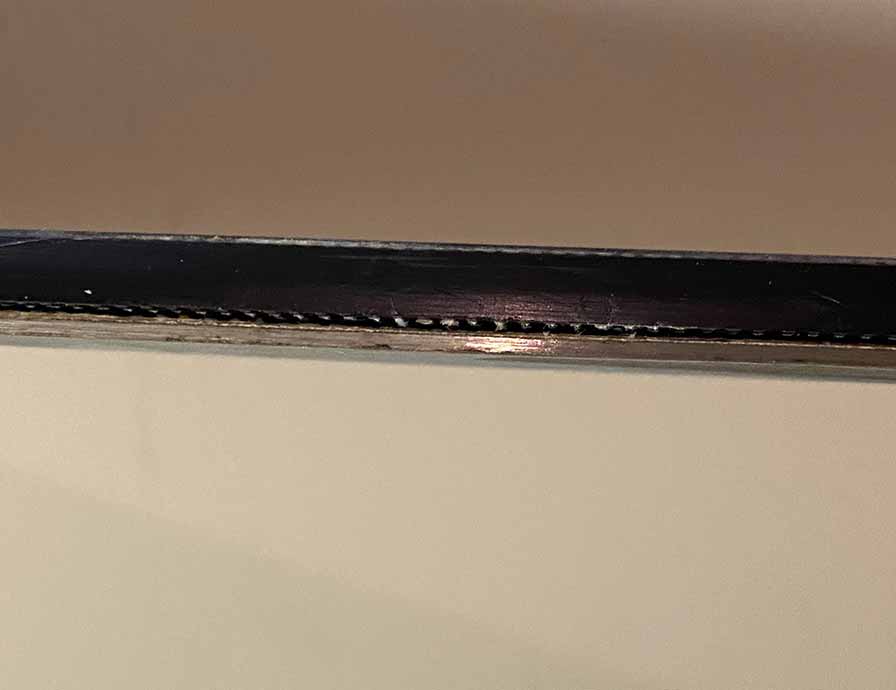
Broken edge
If you smack a rock, snowmaking pipe, tree or other inanimate object hard enough you might break an edge. If you break an edge on a relatively new board it may be possible to have the edge repaired, but it will be a costly repair job. If you break an edge on an older board it’s definitely a legitimate reason to retire the board and recycle it.
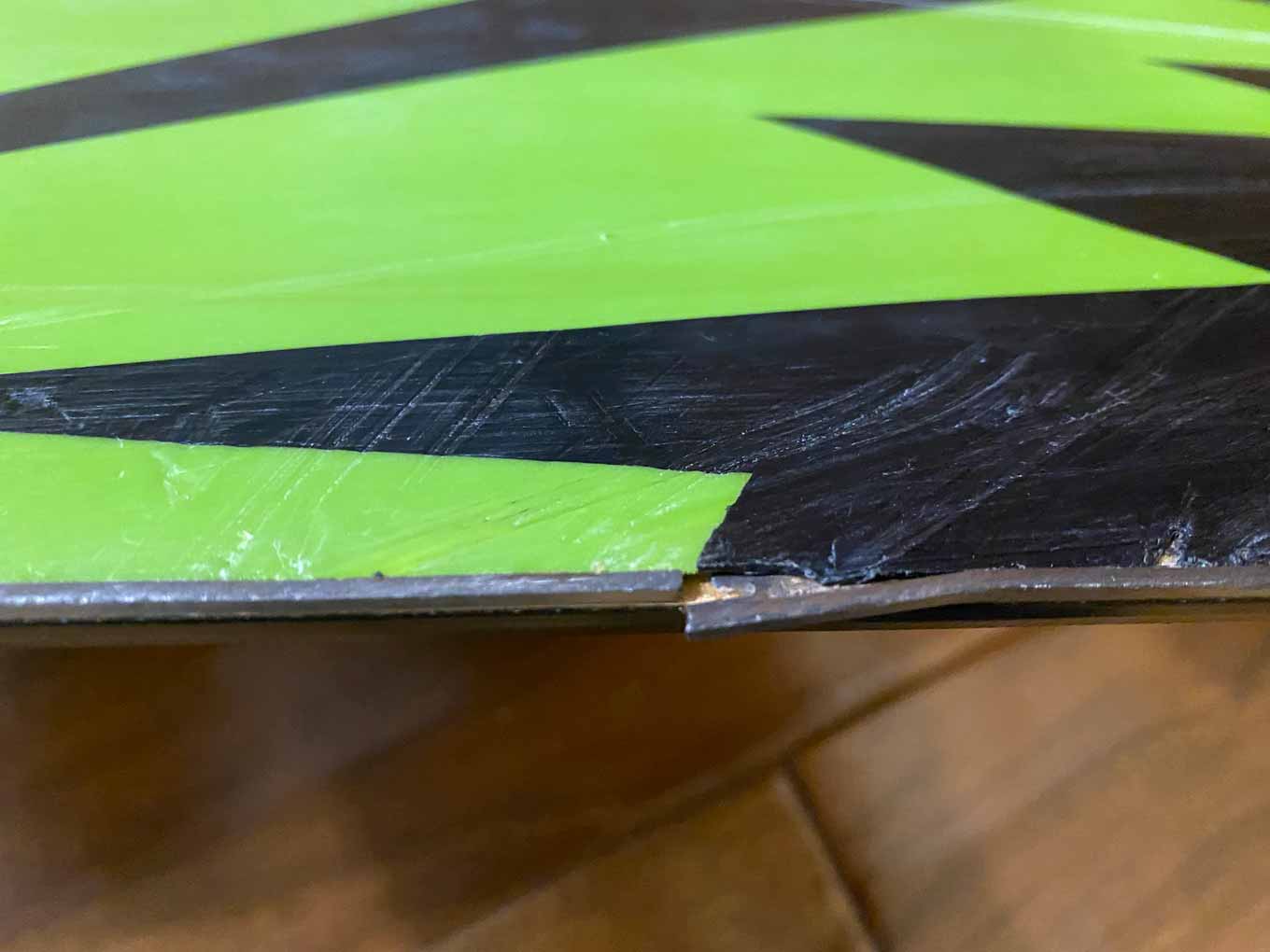
Substantial base damage
Hitting rocks on your snowboard is inevitable if you ride off piste. Lightly scraping a rock might only pinstripe a board’s base, but if you hit a rock hard enough it will gouge out the base material down to the fiberglass and wood core. Base damage that exposes fiberglass is called a “core shot”. Small core shots are easily repairable, but large, deep core shots may warrant retiring and recycling, especially on an older board. A few small core shots and some pinstriping is not a reason to recycle a board, however. A good snowboard tuner can fill the holes and grind the base giving the board a second life.
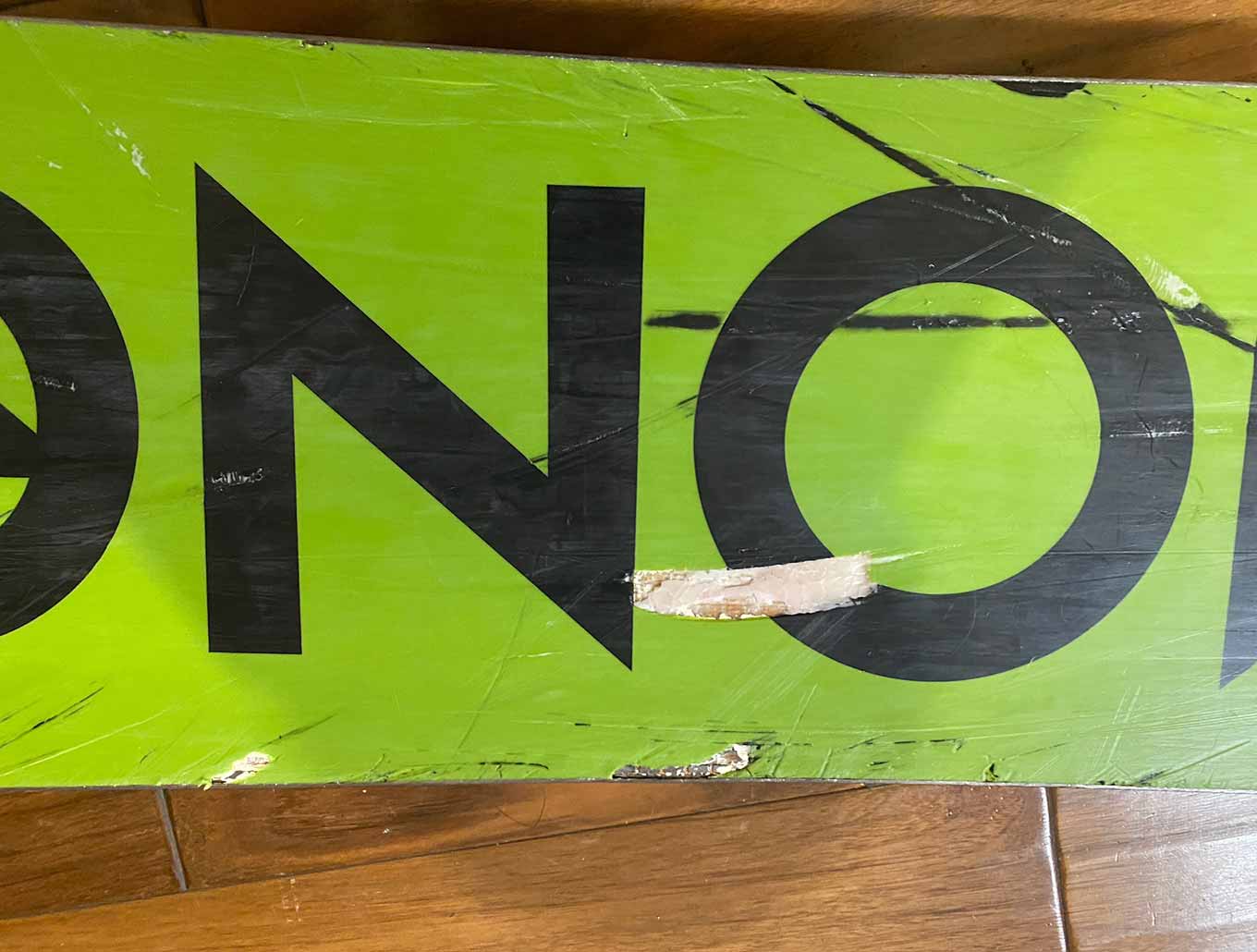
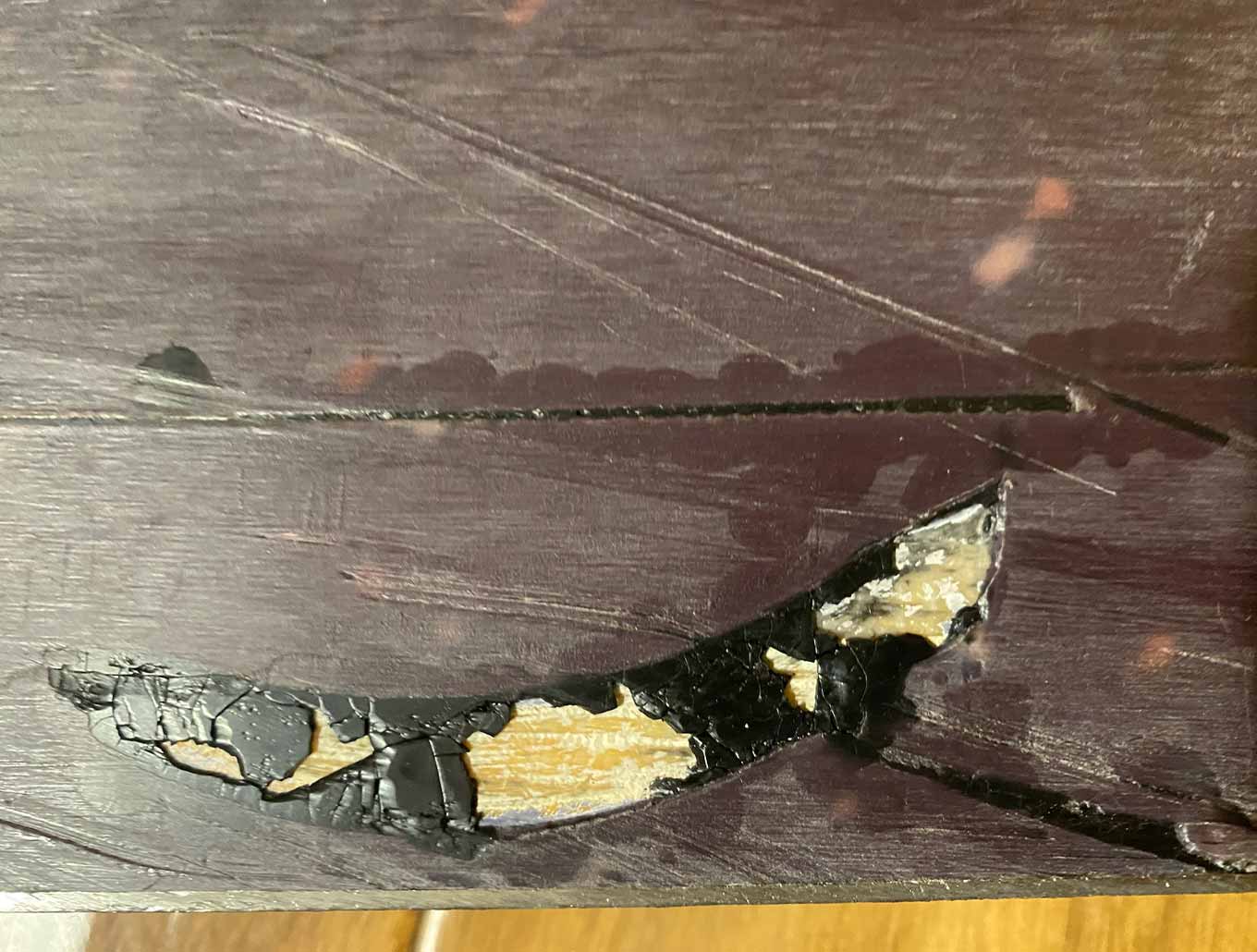
Die-cut base delamination
It is not common, but sometimes the die-cut base on a snowboard will start to delaminate. If this happens when your board is covered by a warranty, submit a warranty claim. If this happens when your board is not covered by a warranty it's likely time to recycle the board. A professional tuner may be able to reglue the die-cut to the base, but it's very likely that the base will come apart again in the near future.
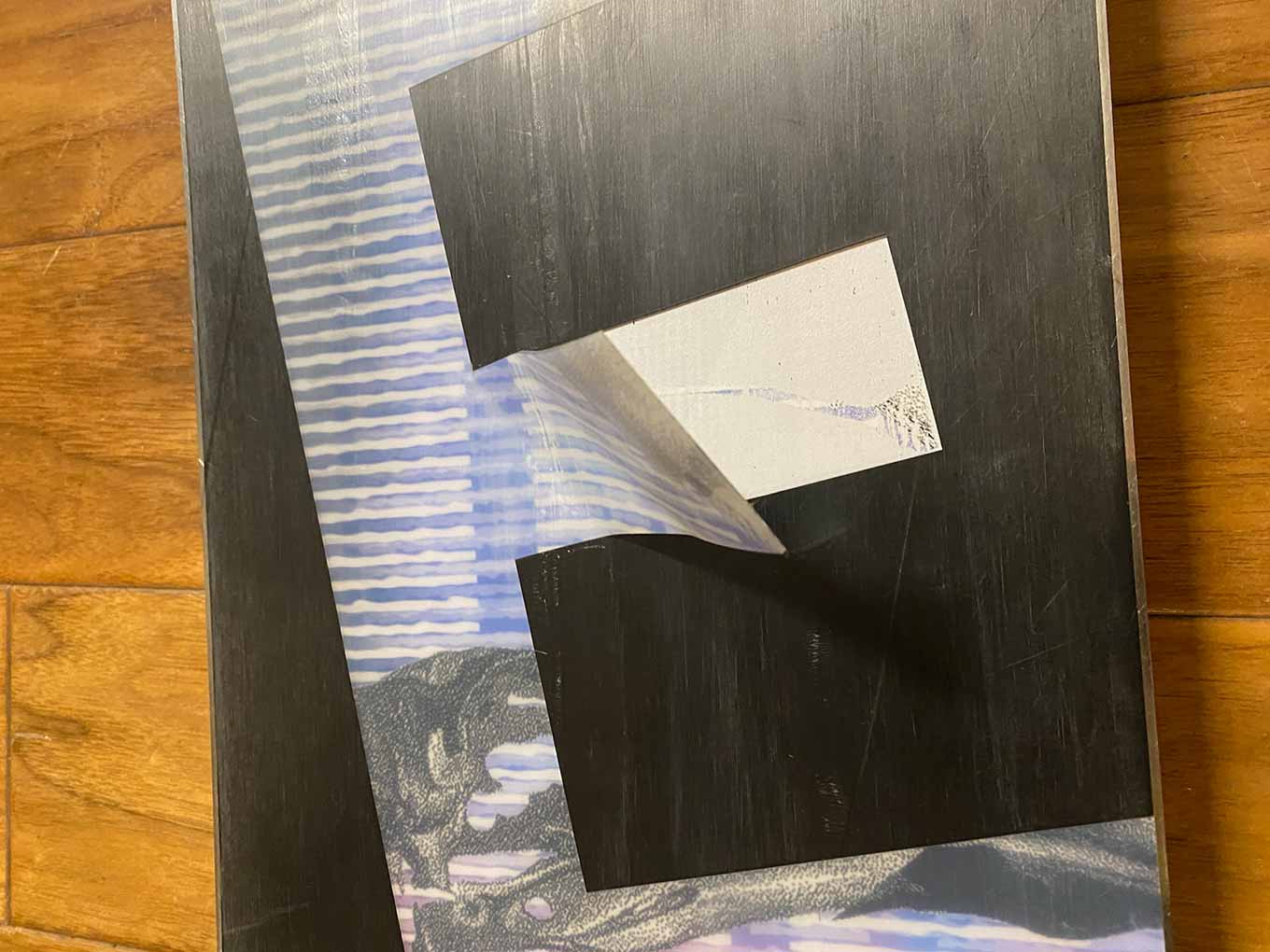
Keep your rock board!
One of the best ways to prolong the life of a new snowboard is to ride an older board early in the season when the snow is not yet that deep. A used board that has a lot of scratches and maybe even some small core shots or edge dings makes the perfect “rock board”. Riding a rock board when the snow is thin will save you from damaging a new board if you unexpectedly hit something. If you ride a lot in the early season it’s important to have a rock board. So if your old board is a little haggard, but still rideable, don’t recycle it. Keep it in the quiver and bust it out when the conditions warrant riding a board you don’t mind damaging.
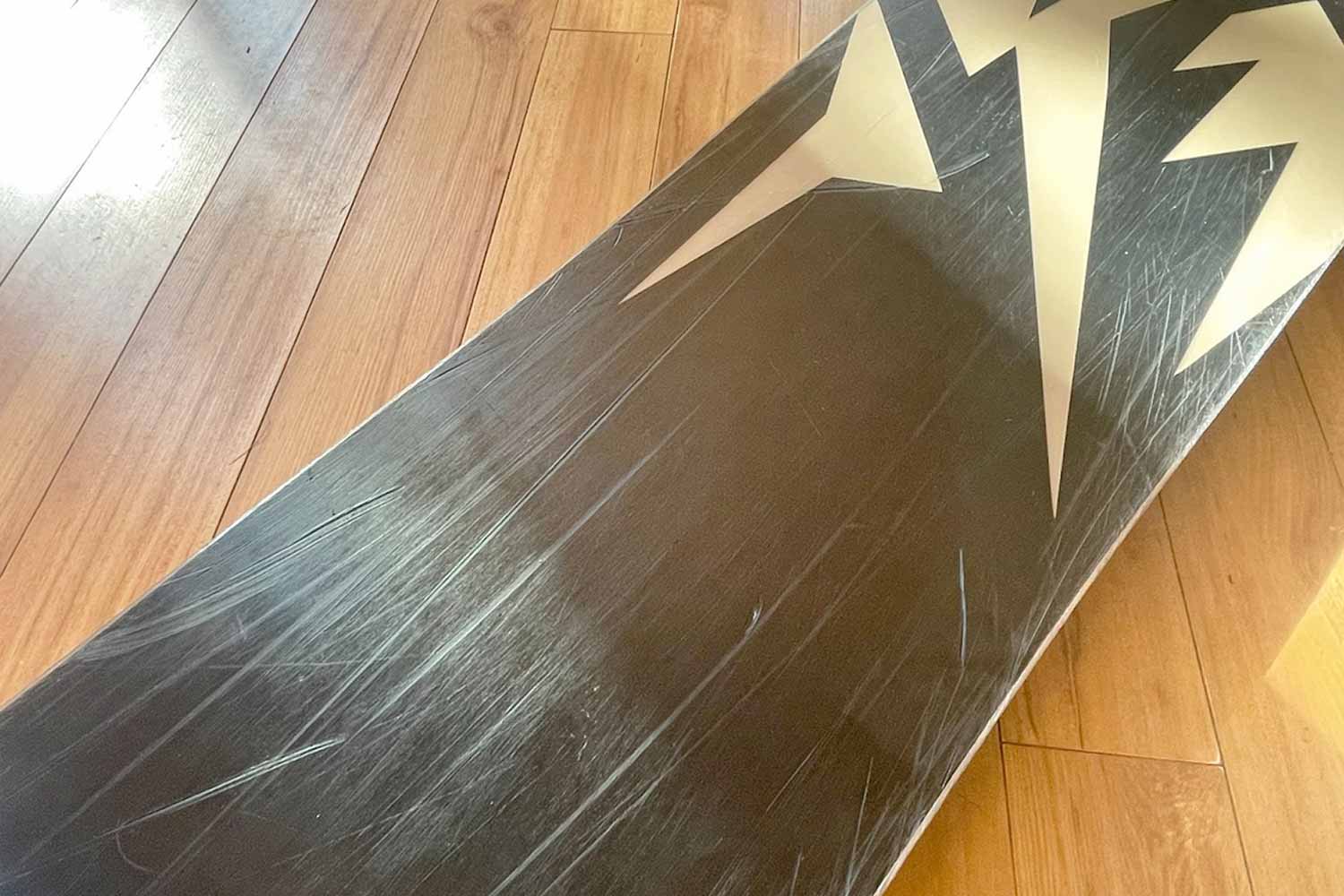
Recycle your dead board
The more boards we get back, the more boards we can build using the technology. This is where riders like you come in.
